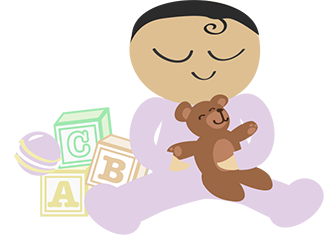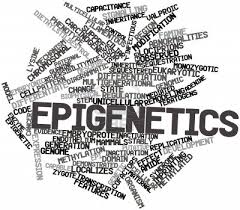Epigenetics
How are we different?
I am sure that it will be a surprise for you to learn that 99.9% of genes are identical for every person on earth. This means that the differences we see at birth don’t depend on whether that child has a specific gene inherited from you but rather, differences are as a result of tiny variances in single genes.
The power of the womb
DNA does not produce life. It is the womb that, despite fertilization, will determine embryos attachment and nourishment. Both whilst the embryo is growing in the womb and after birth, differences perceived between children are not so much about the tiny variables in single genes but also due to specific genes being “activated” in some humans and not in others.
This “activation” in only certain genes is affected by many different factors during our lives including lifestyle, hormones, exposure to carcinogens and, among other factors, the normal physiological working of the body. How we feel, think and react also causes certain genes to be expressed and others reserved. One example of many is the incidence of breast and ovarian cancer that has been linked to a woman’s specific exposure to estrogen and progesterone and the affects that these hormones have on cell differentiation.
These mechanisms that are expressed in some people and not in others are outside the gene and termed epigenetic factors. The expression of genes begins in the womb. The woman carrying the child; her internal environment is responsible for how the baby’s genes are expressed. This early stage of life, the first 40 weeks or so, begins to shape the characteristics of the child birthed.
The extent of Epigenetics
Epigenetics is a field of biology dealing with information held above and beyond the gene.
(http//en.wikipedia.org) “In biology, the term epigenetics refer to changes in phenotype (appearance) or gene expression caused by mechanisms other than changes in the underlying DNA sequence, hence the name epi – (Greek: over; above) – genetics. These changes may remain through cell divisions for the remainder of the cell’s life and may also last for multiple generations. However, there is no change in the underlying DNA sequence of the organism; instead, non-genetic factors cause the organism’s genes to behave (or “express themselves”) differently.”
Scientific evidence has shown that genes and DNA are not responsible for the ultimate uniqueness of human beings. Some schools of thought have suggested the even “as we think” will affect expression of the gene. Genes may be expressed or remain dormant depending on energetic signals outside the cell, from our positive or negative thoughts.
Science Daily (13 April 2009) “A certain laboratory strain of the fruit fly Drosophila melanogaster has white eyes. If the surrounding temperature of the genetically identical embryos, which are normally nurtured at 25 degrees Celsius, is briefly raised to 37 degrees Celsius, the flies alter hatch with red eyes. If these lies are again crossed, the following generations are partly red-eyed – without further temperature treatment – even though only white-eyed flies are expected according to the rules of genetics.
The concept of epigenetics offers an explanation of this result. Epigenetics examines the inheritance of characteristics that are not out in the DNA sequence.
Another well documented example is that of the Agouti mice which are fat, yellow in color and prone to cancer and diabetes. When the pregnant mice are nourished with a diet rich in folic acid, B12 and choline they give birth to healthy slim, brown offspring; as do these mice in turn.
The effect of epigenetics on donor egg conception
Remembering that 99.9% of a baby’s genes are identical to all other humans, 0.1% results in the variations we see in humans.
A baby conceived using a donor egg (roughly the size of a full stop) gets his/her genes from the donor; she gets the “instructions” on the expression of those genes from the woman who carries him/her to term.
This means that a baby conceived using donor egg has 3 biological parents: a father, the egg donor and the woman that carries the pregnancy. The child who is born would have been physically & no doubt emotionally different had another woman carried that child. In other words the birth mother influences what the child is like at a genetic level – it IS her child. She has had a “say” in her offspring as does the donated egg and the sperm used to fertilized.
In horse breeding for example, it’s not uncommon to implant a pony embryo into the womb of a horse. The foals that result, are different from nomal ponies. They’re bigger. These animals’ genotype – their genes – are the same as a pony’s, but their phenotype – what their genes actually look like in the living animal – is different. Taken from a booklet published by Freedom Pharmacy “Perhaps the greatest myth surrounds pregnancy. Many believe the uterus is simply an incubator. Nothing could be further from the truth. The most important aspect of all pregnancies – including egg donation pregnancies- is that as the fetus grows, every cell in the developing body is built out of the pregnant mother’s body. Tissue from her uterine lining will contribute to the formation of the placenta, which will link her child. The fetus will use her body’s protein, then she will replace it. The fetus uses her sugars calcium, nitrates, and fluids, and she will replace them. So, if you think of your dream as you dream house, the genes provide merely a basic blueprint, the biological mother takes care of all the materials and construction, from the foundation right on up to the light fixtures. So, although her husband’s aunt Sara or the donor’s grandfather may have genetically programmed the shape of the new baby’s earlobe, the earlobe itself is the pregnant woman’s “flesh and blood”. That means the earlobe, along with the baby herself, grew from the recipient’s body. That is why the child is her biological child.”


Thanks for this post! So informative. I might need donor eggs as well as a friend of mine, so I’ll share the info with her!
LikeLiked by 1 person